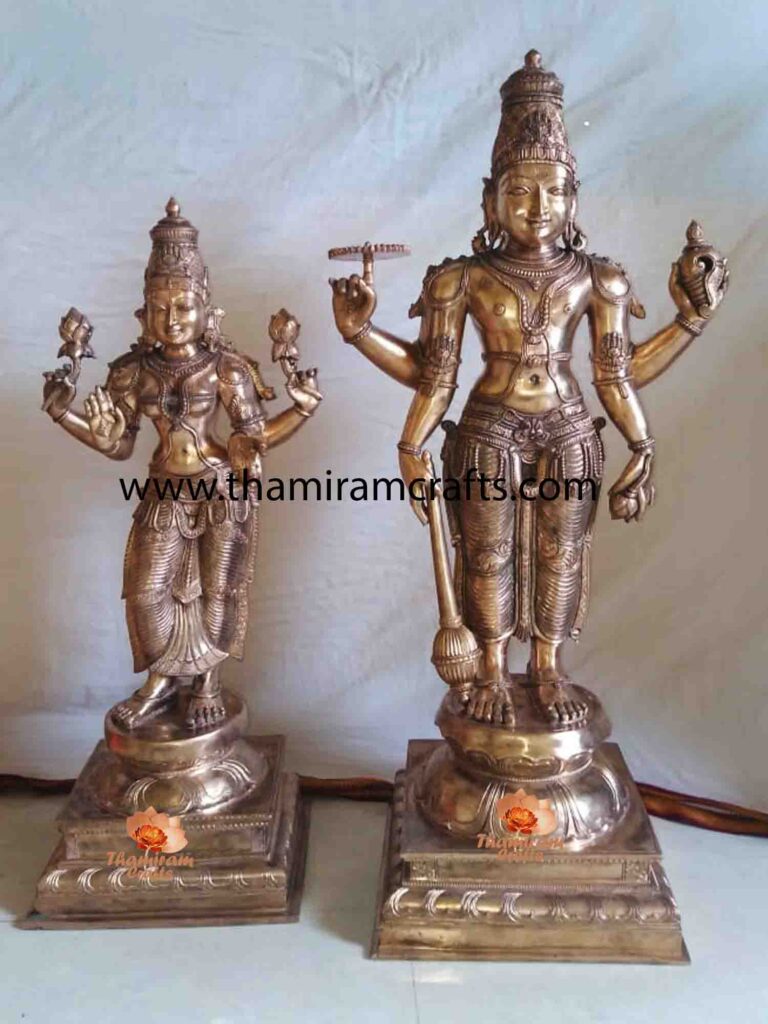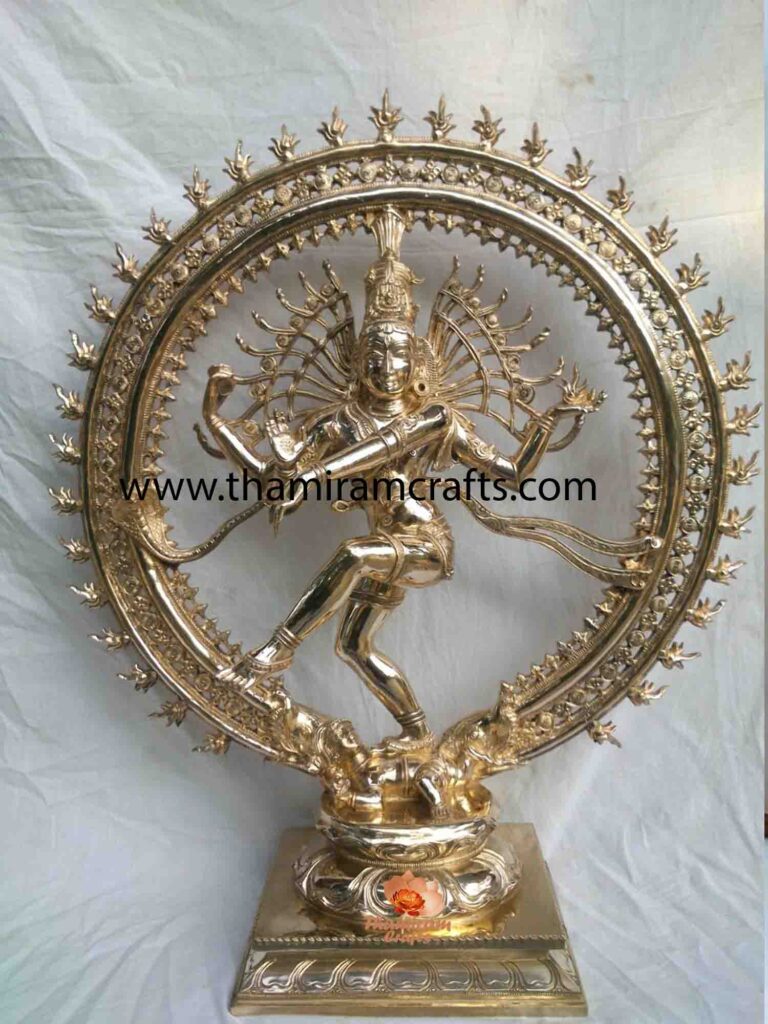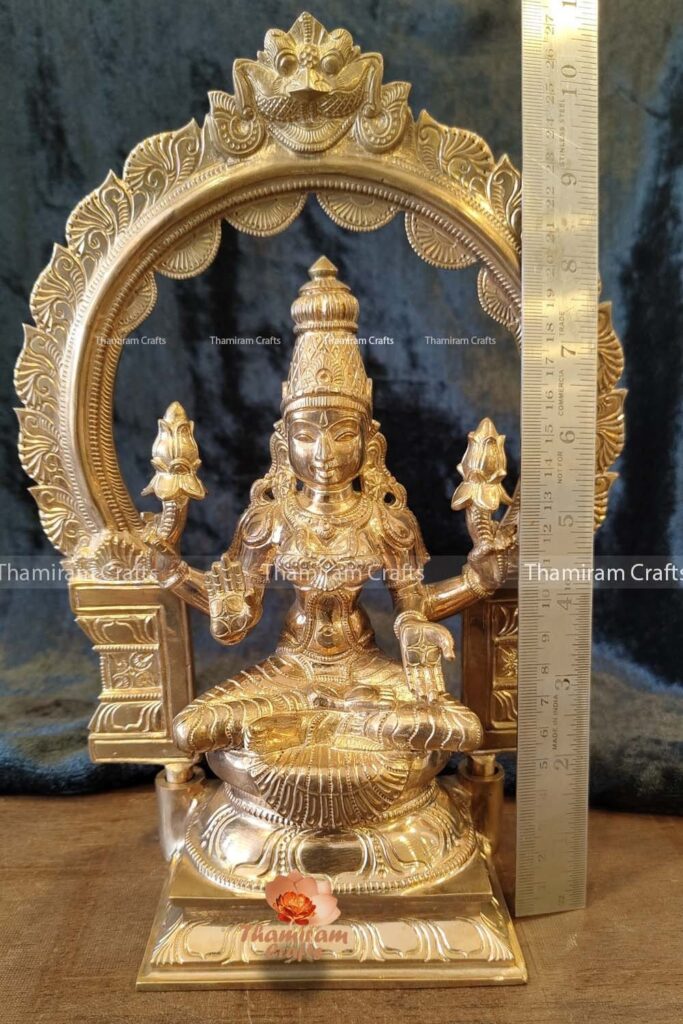Panchaloha idols are traditional icons crafted using an alloy of five metals—commonly gold, silver, copper, brass, and lead. These sacred idols are deeply rooted in Indian religious and cultural traditions, with a significant role in temples and personal worship. The choice of panchaloha is not merely aesthetic but also symbolic, representing a harmonious balance of cosmic elements and their spiritual connotations. The metals are believed to correspond to the five elements: earth, water, fire, air, and ether, which align with the principles of ancient Indian metaphysics.
The craftsmanship of panchaloha idols is an intricate process that requires exceptional skill and adherence to prescribed proportions and forms as outlined in traditional texts like the Shilpa Shastra. The artisans, often from hereditary sculptor communities, use the lost-wax casting technique, ensuring that every idol is imbued with divine symbolism and artistic precision.
Prof. S.K. Ramachandra Rao, in his Encyclopedia of Indian Iconography, highlights the profound iconographic and spiritual significance of panchaloha idols. He underscores how these icons are not merely objects of devotion but embodiments of the deities themselves, channeling divine energy when consecrated through rituals like prana pratishta. Rao’s work provides detailed insights into the aesthetic standards, symbolic meanings, and ritualistic contexts of these idols, showcasing their timeless importance in Indian religious and artistic traditions.
Panchaloha idols are commonly used to represent major deities in the Hindu pantheon, each meticulously crafted to reflect their symbolic attributes and iconographic details as prescribed in ancient texts. Here are a few examples of prominent deities often crafted in panchaloha:
1. Lord Vishnu
- Iconography: Panchaloha idols of Vishnu are typically depicted with four arms holding the conch (shankha), discus (chakra), mace (gada), and lotus (padma). He often stands or reclines on the serpent Adishesha, symbolizing his role as the preserver in the cosmic cycle.
- Significance: Vishnu idols are revered for their protective and sustaining energies. They are commonly worshipped in Vaishnavite temples and homes.

2. Lord Shiva
- Iconography: Shiva idols in panchaloha are often depicted as Nataraja, the cosmic dancer, or in a meditative pose with the trident (trishula), drum (damaru), and a snake around his neck.
- Significance: Shiva’s icons emphasize his roles as the destroyer and regenerator, symbolizing transformation and spiritual awakening.

3. Lord Ganesha
- Iconography: Ganesha idols are depicted with an elephant head, large ears, and a potbelly, often holding a modak (sweet) and a noose (pasha).
- Significance: Ganesha is revered as the remover of obstacles and the lord of beginnings, making his idols a popular choice for homes and public worship.
4. Goddess Lakshmi
- Iconography: Lakshmi, the goddess of wealth, is shown seated or standing on a lotus, holding lotus flowers in her hands, with coins flowing from one hand.
- Significance: Her panchaloha idols symbolize prosperity, abundance, and spiritual growth.

5. Lord Hanuman
- Iconography: Hanuman is depicted in a heroic posture, sometimes holding a mountain or bowing with folded hands to Rama and Sita.
- Significance: Hanuman idols are associated with strength, devotion, and protection against evil.

Craftsmanship and Ritual Use
As Prof. S.K. Ramachandra Rao elaborates in his Encyclopedia of Indian Iconography, each panchaloha idol is crafted with detailed adherence to iconographic canons such as the Agamas and Shilpa Shastras. After completion, the idol undergoes consecration (prana pratishta), where it is believed to become a vessel for divine energy. These idols are then used in daily worship, temple rituals, and festivals.


Leave a Reply